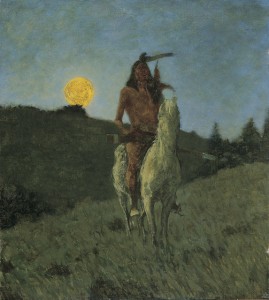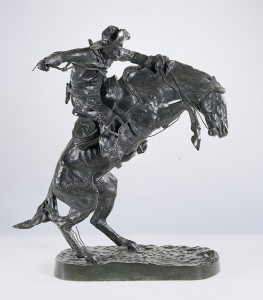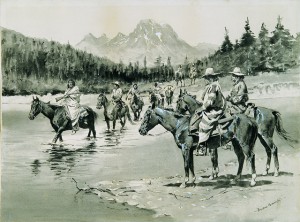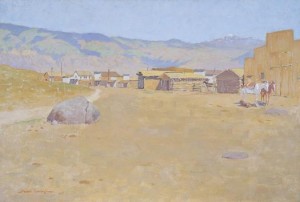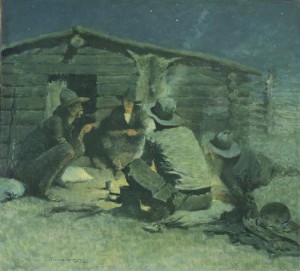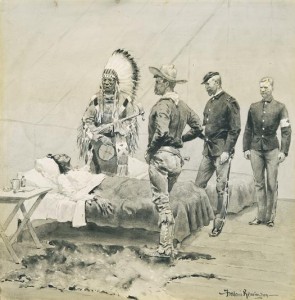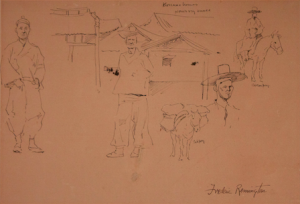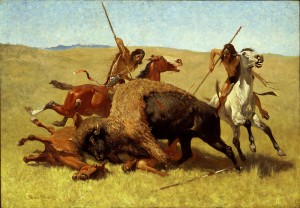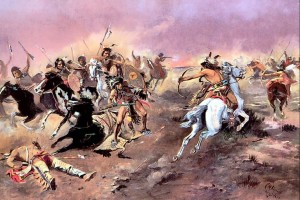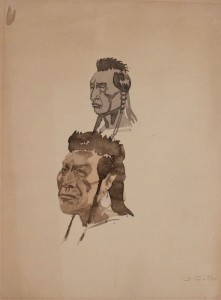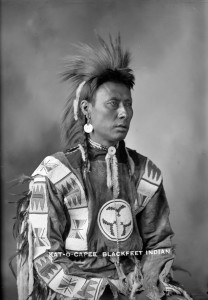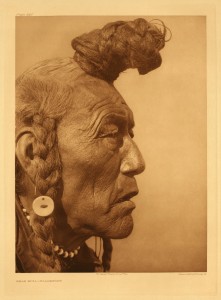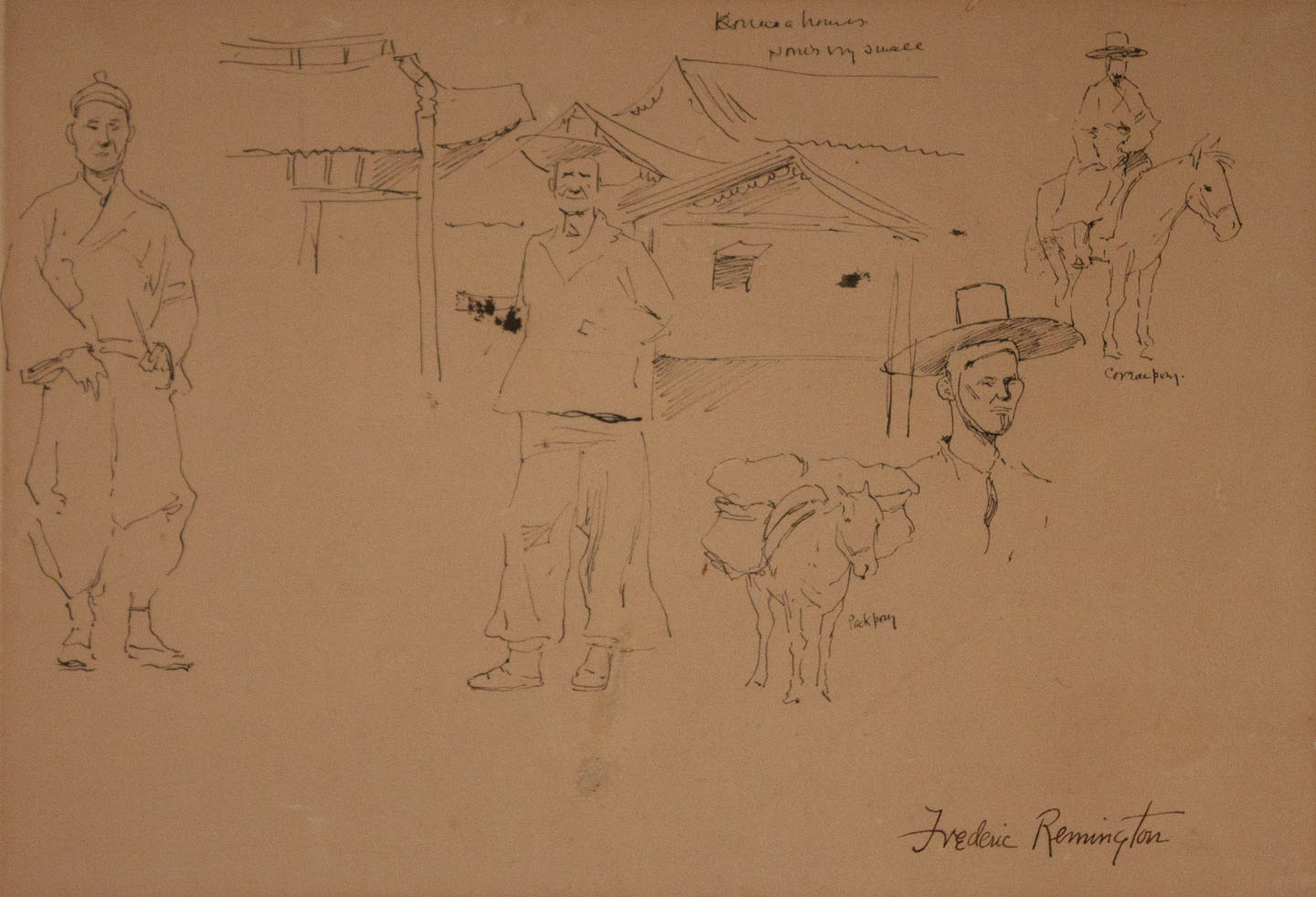Frederic Remington was an American artist and writer. He specialized in interpreting the American West through various art forms such as drawings, paintings, sculptures, writings, etc. In his pamphlet “Drawings,” published in 1897, Remington depicts many scenes in American history ranging from portraits of Native peoples, to landscapes, to war scenes. Remington’s work contributed largely to what most people might think of as the “American West.” When I think of “the West,” I think of cowboys, saloons, Native Americans and the vast deserted landscapes waiting to be claimed! Remington’s art portrays the drama, action and contrast between peoples of the west.
Remington’s work is important for many reasons. The first is their cultural significance. As mentioned before, many of his works shaped the popular image of the west. Because his art is so influential, many different interpretations can lead to harmful attitudes and opinions. Being an influential artist is not inherently harmful, however it can be if we are unaware of the biases or implications their work exhibits.
Remington’s work generally represents how the European and other explorers viewed Native American cultures. Here are a few photographs of Remington’s work which most certainly align with the stereotypical image of the “west.”
Forsythe’s Fight on the Republican River
What is most interesting is this drawing, The Missionary and the Medicine Man.
the missionary and the medicine man
One interesting aspect of this drawing is the application of technique. In the sketch, the missionary is standing, while the medicine man is on all fours and on the ground. The contrast of their positions and height suggests a social hierarchy. It implies that the medicine man is less sophisticated than the missionary. The Natives Americans in the background are poorly lit and on the ground while the missionary is well lit with a light source from above. This indicates that he might have divine qualities, or is blessed by the divine. Through the application of visual art techniques such as form and value, this is an example that perpetuates the stereotypical image of the unrefined societies of the Native Americans.
Remington’s portrayal of both peoples represents the perceptions of the European explorers and other settlers. In this specific instance, Remington’s illustrations are problematic. This drawing portrays the Native American culture and inferior and unsophisticated. This is a strong bias that has influenced many other’s thoughts.
What we cannot infer from his drawing is the cultural significance of a medicine man in many Native American tribes. Medicine men in some tribes were highly regarded as people with supernatural healing powers. Another significant part of some of the Native American cultures was the Medicine Dances or Medicine Bundle Ritual like that of the Blackfoot. The Medicine Bundle Ritual was also accositated with the sacred medicine bundle. Remington’s work may not be accurate for interpreting the cultural significance of the medicine men, however it is not unimportant. It still provides information about how the Europeans and explores viewed the Native American culture.
This relates to Nettl’s studies, and even some of Densmore’s work regarding ethnography. Nettl emphasizes the importance of the method in which a culture should be “studied.” Much of a perception is based on the understanding of a culture. Nettl focused much of his time immersing himself and participating in a culture, not simply observing it from afar. His approach to the study of a culture is very important when attempting to represent a different culture.
Works Cited
“Frederic Remington.” Columbia Electronic Encyclopedia, 6Th Edition (March 2017): 1. Academic Search Premier, EBSCOhost (accessed September 21, 2017).
Lucas, Joseph S. “Civilization or Extinction: Citizens and Indians in the Early United States.” Journal Of The Historical Society 6, no. 2 (June 2006): 235-250. Academic Search Premier, EBSCOhost (accessed September 23, 2017).
Remington, Frederic. 1897. Drawings by Frederic [[Remington]]. Available through: Adam Matthew, Marlborough, American West, http://www.americanwest.amdigital.co.uk/Documents/Details/Graff_3457 [Accessed September 21, 2017].

